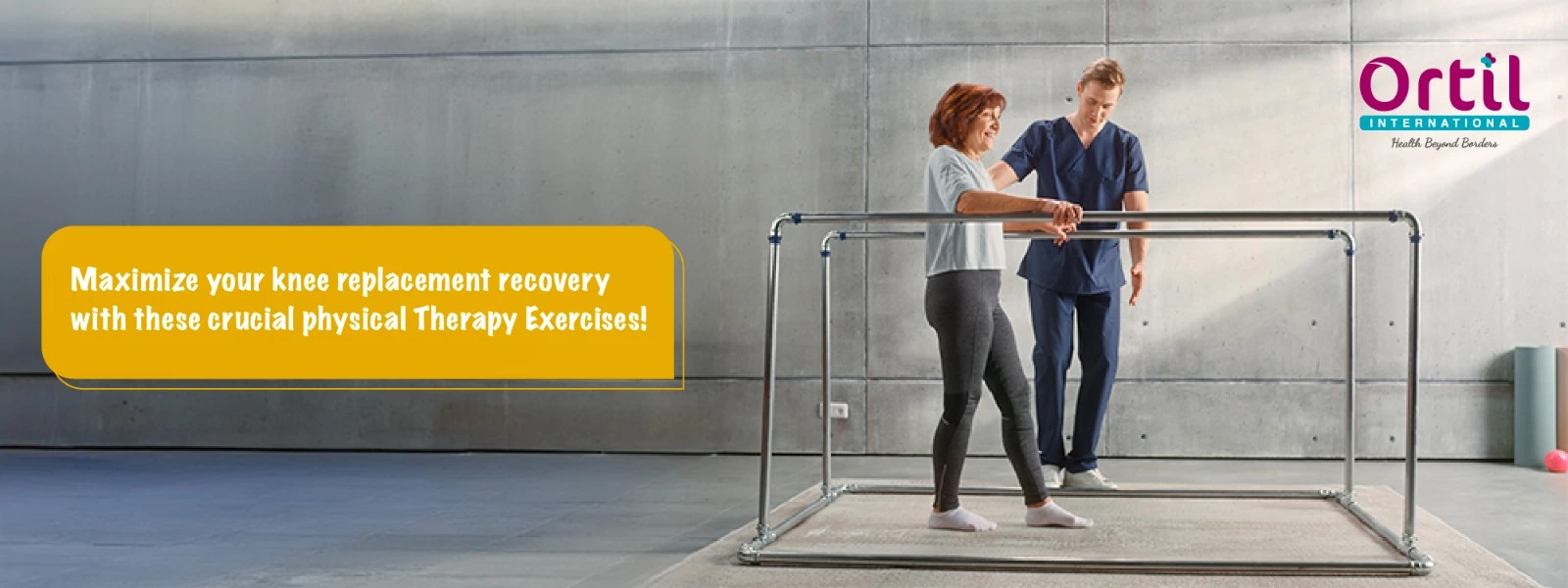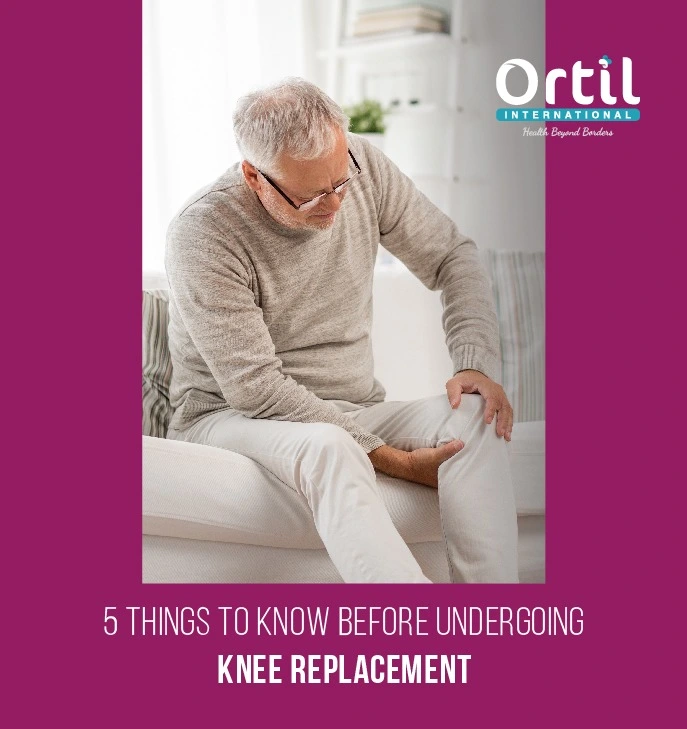Importance of Physiotherapy after Knee Replacement Surgery
Physiotherapy after knee replacement is an important part of the recovery, and without physiotherapy, many complications can occur during the recovery period.

After a knee replacement procedure, physiotherapy helps prevent scar formation and strengthens the muscles in the surrounding. Let’s discuss the importance of physiotherapy after knee replacement in detail:
What does Physiotherapy involve?
Knee replacement physiotherapy involves instructions and education for patients in performing daily activities. It also involves exercises for joints and muscles, which help the replaced knee recover faster. Physiotherapists always plan the exercise program according to the needs and demands of each patient. For example, suppose a person is an athlete and needs strength in his knee muscles to return to sports activities. In that case, a physiotherapist designs a unique set of exercises for him to be competitive.
What are some Physiotherapy exercises?
Physical therapy after knee replacement uses different exercises, each with a different goal and technique. In the start, light exercises are used in sessions, which gradually increase to put extra load on the knee joint. Exercises are different in each phase after recovery. Physical therapy after knee replacement surgery involves the following:
0-2 Weeks After Surgery
Exercises:
- Ankle pumps to promote circulation
- Quadriceps sets (tightening the thigh muscles)
- Straight leg raises
- Gentle knee bends (heel slides)
Goals:
- Manage pain and swelling
- Begin gentle range of motion exercises
- Start walking with assistance (walker or crutches)
2-6 Weeks After Surgery
Exercises:
- Stationary cycling (low resistance)
- Seated knee extensions
- Step-ups on a low step
- Hamstring curls
- Balance exercises
Goals:
- Increase range of motion
- Begin weight-bearing as tolerated
- Strengthen muscles around the knee
6-12 Weeks After Surgery
Exercises:
- Leg presses (low resistance)
- Standing hip abduction
- Mini squats
- Walking longer distances
- Advanced balance and proprioception exercises
Goals:
- Achieve full range of motion (0-120 degrees is a common goal)
- Improve strength and endurance
- Increase independence in daily activities
3-6 Months After Surgery
Exercises:
- Treadmill walking or jogging (if cleared by the surgeon)
- Lateral step exercises
- Resistance band exercises for hip and knee muscles
- Low-impact aerobics (e.g., swimming, cycling)
- Sports-specific training, if applicable (e.g., golf, tennis)
Goals:
- Return to normal activities
- Improve cardiovascular fitness
- Enhance muscle strength and joint stability
6+ Months After Surgery
Exercises:
- Regular walking, swimming, or cycling
- Strength training exercises focusing on lower body
- Flexibility exercises for the knee and surrounding muscles
Goals:
- Maintain knee function and overall fitness
- Prevent future injuries
What Are the Benefits of Physical Therapy?
Physical therapy is an important part of recovery, which improves the quality of life of patients after knee replacement surgery. It has many benefits, and without physical therapy, you cannot fully recover after knee replacement. Some of its benefits are mentioned below:
- Helps relieve pain
- Increases range of motion
- Increases flexibility of the joint
- Strengthens the muscles surrounding the joint
- Decreases the need for pain medication
- Manages swelling
- Increases blood circulation
- Increases stability and prevents falls
- Facilitates a return to a normal, independent life
Rehabilitation starts on the same day as knee replacement surgery, and it may sound strange to you. On the day of surgery, the physiotherapist guides the patient to stand up with the support and walk a few steps. The hospital staff will provide help for daily activities like using the toilet or changing clothes. The physical therapist also guides the patient on how to get in and out of bed and do different daily activities with less irritation.
Physical therapy after total knee replacement includes strength training, and the physiotherapist gradually increases the load on the knee joint where knee replacement surgery is performed. The physical therapist also works on flexibility, balance, and walking training as the patient improves. Rehabilitation also involves a home training program, where physiotherapists teach patients to move around in the home environment.
How many days of physiotherapy are required after knee replacement?
Every patient has a unique condition at the time of surgery, and each patient may require different time periods to recover fully from knee replacement surgery. Because of the severity of their condition, some patients need more physiotherapy sessions than others.
In the start, you should take physiotherapy sessions daily for 2 to 3 weeks. It is the most crucial part of recovery, and maximum recovery can occur during this time period. After 4-5 weeks, you should visit physiotherapy clinic 2-3 times per week. And after 8-9 weeks, 1-2 days per week suits the best. However, some patients can recover early and may not require proper follow-ups, but they can only do so when needed.
Conclusion
Physiotherapy after knee replacement surgery helps in faster recovery and is now an important part of the recovery. Orthopedic surgeons and physiotherapists work in collaboration to plan individual treatment for each patient according to their condition. Physio after knee replacement improves new knee joint integrity and strengthens the muscles around the knee joint.
FAQ's of Physiotherapy after Knee Replacement Surgery
How Long Do I Need Physio After Knee Replacement?
Each patient is unique, but 6-8 weeks of physio is generally recommended after knee replacement.
How Many times a Day Should I Do Physical Therapy After Knee Replacement?
Physical therapy should be performed two to three times daily after knee replacement.
What Kind Of Physical Therapy Comes After Knee Surgery?
Physical therapy after knee replacement involves range-of-motion exercises, strength training, patient education, and more.
What is The Role Of Physiotherapy After Total Knee Replacement?
Physiotherapy increases the new knee joint life and helps the patients to return to everyday life.
What Does Physical Therapy Do For Knee Replacement?
Physical therapy helps strengthen the muscles around the replaced knee and increases the patient's ability to perform activities independently.


























